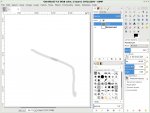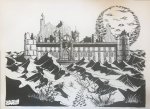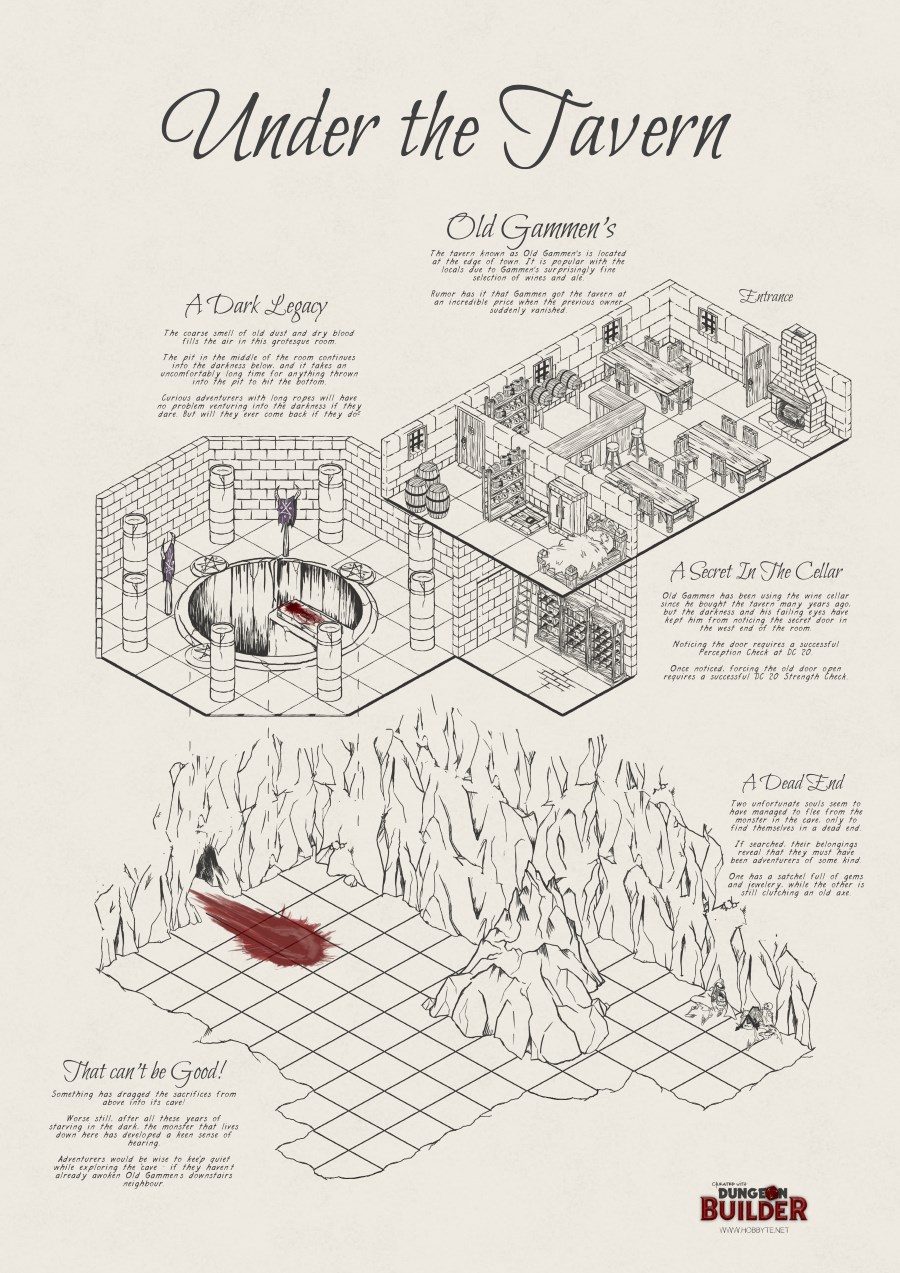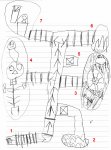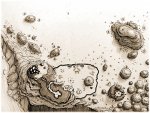squeen
8, 8, I forget what is for
@The1True : Here is the photo of the quick-sketch pencils from my phone. No contrast. I gooped it up in GIMP using dodge-and-burn and a fat brush knowing it was a throw-away. (elapsed time ~20 minutes)

Next step (which will take me hours and hours) is to either:
(a) ink the pencils with a micro-line pen and retake the photo with better lighting (then carefully shade it in GIMP)
(b) redo it in the CAD program I wrote for fixing maps (then carefully shade it in GIMP)
But that doesn't matter at this point because I will stretch, squish and otherwise deform the map as I work through keying. My major goal was to generate complex topography for exploratory play and get past a bout of Writer's Block. Also, this is a view of the Stronghold "pre-devastion". The modern-day version with be mostly ruins---having been blown-to-bits by a magical detonation.
I am just so happy to have found a layout I can stand to look at. I've thrown away three previous attempts that just sat there like a dead fish, failing to inspire. This one at least has my brain "filling in the key", and bubbling with notions of "how to fix the map". I can also "see" the place (mentally) in it's Halcyon Days , so to speak....stone ramps, aqueducts, lavish gardens, architecture designed to awe, impregnable walls, etc....(a fantasy world's Alhambra or Xanadu)...and for me, that's a good sign---it means the rough-draft did it's job and I can finally get-to-work.
This is the heady, fun, brainstorming stage---envisioning the details of "This was once..." , before mercilessly expunging all of that from the final text, like a good Brycian designer should! ;P
Most importantly, does a topologically-complex map invite exploration?
Anyhow, initial point being that Dungeonscrawl gets you to a really good place fast without all the mess and hassle. I think it is going to be a game-changer.

Next step (which will take me hours and hours) is to either:
(a) ink the pencils with a micro-line pen and retake the photo with better lighting (then carefully shade it in GIMP)
(b) redo it in the CAD program I wrote for fixing maps (then carefully shade it in GIMP)
But that doesn't matter at this point because I will stretch, squish and otherwise deform the map as I work through keying. My major goal was to generate complex topography for exploratory play and get past a bout of Writer's Block. Also, this is a view of the Stronghold "pre-devastion". The modern-day version with be mostly ruins---having been blown-to-bits by a magical detonation.
I am just so happy to have found a layout I can stand to look at. I've thrown away three previous attempts that just sat there like a dead fish, failing to inspire. This one at least has my brain "filling in the key", and bubbling with notions of "how to fix the map". I can also "see" the place (mentally) in it's Halcyon Days , so to speak....stone ramps, aqueducts, lavish gardens, architecture designed to awe, impregnable walls, etc....(a fantasy world's Alhambra or Xanadu)...and for me, that's a good sign---it means the rough-draft did it's job and I can finally get-to-work.
This is the heady, fun, brainstorming stage---envisioning the details of "This was once..." , before mercilessly expunging all of that from the final text, like a good Brycian designer should! ;P
Most importantly, does a topologically-complex map invite exploration?
Anyhow, initial point being that Dungeonscrawl gets you to a really good place fast without all the mess and hassle. I think it is going to be a game-changer.
Last edited:
